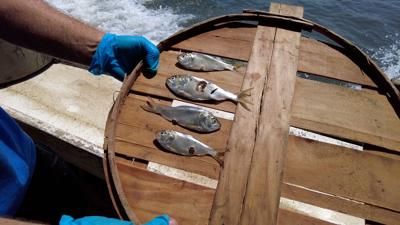ANNAPOLIS, MD. - A disease causing lesions on bait fish in the Chesapeake Bay is raising significant concerns among watermen.
The disease, characterized by ulcers and lesions, is affecting menhaden, a crucial bait fish. Commercial crabber CJ Canby reports seeing dead menhaden floating in the bay on a weekly basis.
"Last year, we had a 5-gallon bucket of menhaden, and 3 or 4 out of them had lesions. The other day, we cast-netted 23 fish, and 4 of them had lesions. So, the rate of lesions in menhaden has astronomically increased," said Captain CJ Canby of the FV Miss Paula.
Canby emphasizes the seriousness of the issue for watermen. "The fish are telling us there's a problem, and it's showing. This is becoming a common occurrence. Some guys use menhaden for bait. Menhaden are the staple for all the fish in the bay. So, if the rockfish don't have enough menhaden to eat, they'll turn to crabs. Other fish don't have menhaden to eat, same thing," he explained.
Maryland's Department of Natural Resources fish pathologist, Mark Matsche, confirms that the disease has been known for some time. "The pathogen is called Aphanomyces. It's a fungal pathogen that can attach to the fish and eat its way in, causing extensive lesions, including the reddened sores that people have seen and even ulcerative lesions which can be quite extensive in advanced or severe cases of the disease," Matsche said.
Matsche notes that occasional outbreaks are influenced by environmental factors, like dead zones, that stress the fish, making them more susceptible to the disease. "Low oxygen conditions. If they migrate into an area with hypoxia, warmer water, or higher salinity due to lack of rainfall, or conversely, if there are storm events causing a dramatic drop in salinity" he explained.
The increasing incidence of diseased menhaden highlights the urgent need for a cleaner Chesapeake Bay.



